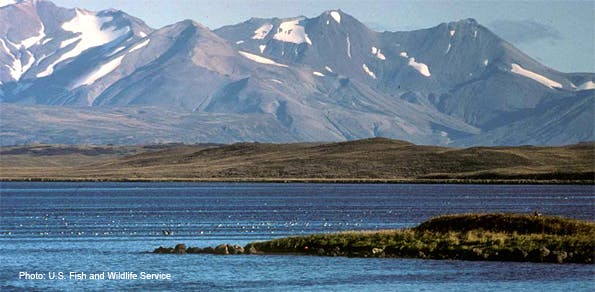Growing up on a barrier island in southern New Jersey, the incredible value of our country’s wildlife refuges was made apparent to me at a very early age. The Edwin B. Forsythe refuge includes more than 47,000 acres of coastal habitat in South Jersey, and, among other things, is a critically important place for migrating birds and waterfowl. When surrounded by a refuge, one comes to realize that nesting sites and turtle hatching areas not only aid in preserving threatened species, but shape the way you interact with the world around you; conservation and recreation seamlessly intertwine.
These specific lands and watersheds all across America – 561 national wildlife refuges spread throughout every state and U.S. territory, covering more than 150 million acres – have been chosen as places of respite, both for wildlife in need of a home, and for people in need of a reminder of all the things nature can tell us, if we only listen.
As Defenders president Jamie Rappaport Clark said, “they are called refuges for a reason. In this challenging economic environment, people depend even more than usual on opportunities to escape the worries of everyday living by engaging with nature and with wildlife. Those opportunities are provided by our country’s National Wildlife Refuge System.”
Yesterday, the Department of the Interior released a report that not only reaffirms the intrinsic worth of these special places, but, perhaps more importantly for Congress to hear, also confirms their concrete economic value. According to the peer reviewed report, Banking on Nature, the National Wildlife Refuge System generates $2.4 billion in economic activity and supports over 35,000 jobs annually.
In addition to providing direct jobs, one major way that refuges, like the one in my own coastal community, support local economies is by boosting tourism. The Banking on Nature report shows that over 46 million visitors from around the world take advantage of the recreational opportunities provided by the National Wildlife Refuge System, which in turn encourages visitors to patronize local hotels, restaurants, shops and other businesses.
And yet, despite the clearly proven economic significance of our nation’s wildlife refuges, congressional funding for the system has been continuously cut. David Houghton, president of the National Wildlife Refuge Association and chair of the Cooperative Alliance for Refuge Enhancement (CARE) coalition (of which Defenders is also a member) lamented the fact that while historically “the Refuge System always did ‘more with less’, now, after three years of budget cuts, it has to do ‘less with less’.”
So while Congress was busy closing the gates on national parks and wildlife refuges during the recent 16-day shutdown, perhaps it should have been paying more attention to the fact that our country’s National Wildlife Refuge System delivered a near 5-fold return this year, bringing in $4.87 for every dollar invested in the refuges. It seems the net worth of our most treasured lands can be calculated, and that the numbers all add up to one conclusion – Congress should be increasing, certainly not decreasing, funding for America’s refuges. It looks like banking on nature is our best bet.
Courtney Sexton is a Communications Associate





